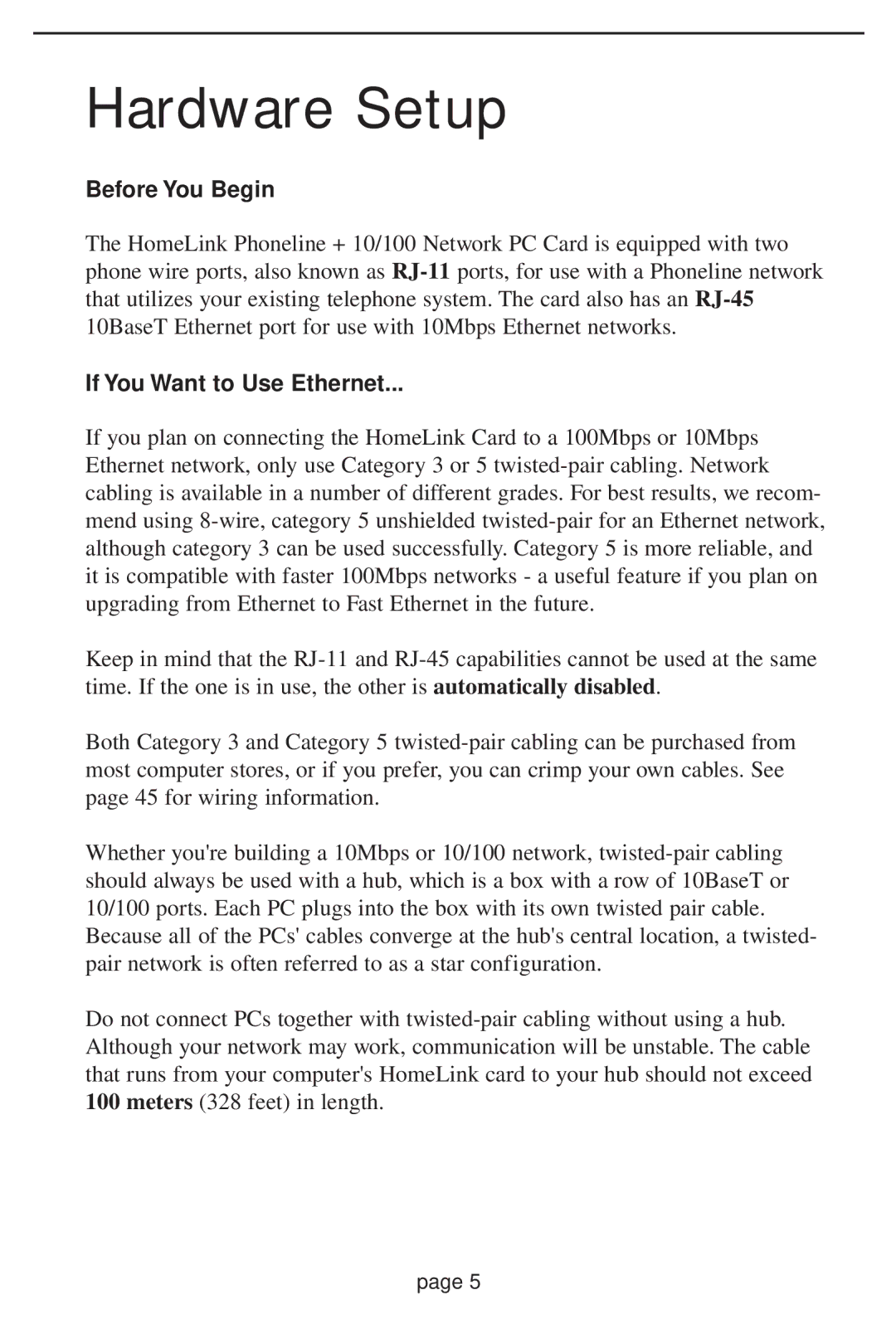Hardware Setup
Before You Begin
The HomeLink Phoneline + 10/100 Network PC Card is equipped with two phone wire ports, also known as RJ-11ports, for use with a Phoneline network that utilizes your existing telephone system. The card also has an RJ-4510BaseT Ethernet port for use with 10Mbps Ethernet networks.
If You Want to Use Ethernet...
If you plan on connecting the HomeLink Card to a 100Mbps or 10Mbps Ethernet network, only use Category 3 or 5 twisted-pair cabling. Network cabling is available in a number of different grades. For best results, we recom- mend using 8-wire, category 5 unshielded twisted-pair for an Ethernet network, although category 3 can be used successfully. Category 5 is more reliable, and it is compatible with faster 100Mbps networks - a useful feature if you plan on upgrading from Ethernet to Fast Ethernet in the future.
Keep in mind that the RJ-11 and RJ-45 capabilities cannot be used at the same time. If the one is in use, the other is automatically disabled.
Both Category 3 and Category 5 twisted-pair cabling can be purchased from most computer stores, or if you prefer, you can crimp your own cables. See page 45 for wiring information.
Whether you're building a 10Mbps or 10/100 network, twisted-pair cabling should always be used with a hub, which is a box with a row of 10BaseT or 10/100 ports. Each PC plugs into the box with its own twisted pair cable.
Because all of the PCs' cables converge at the hub's central location, a twisted- pair network is often referred to as a star configuration.
Do not connect PCs together with twisted-pair cabling without using a hub. Although your network may work, communication will be unstable. The cable that runs from your computer's HomeLink card to your hub should not exceed 100 meters (328 feet) in length.
